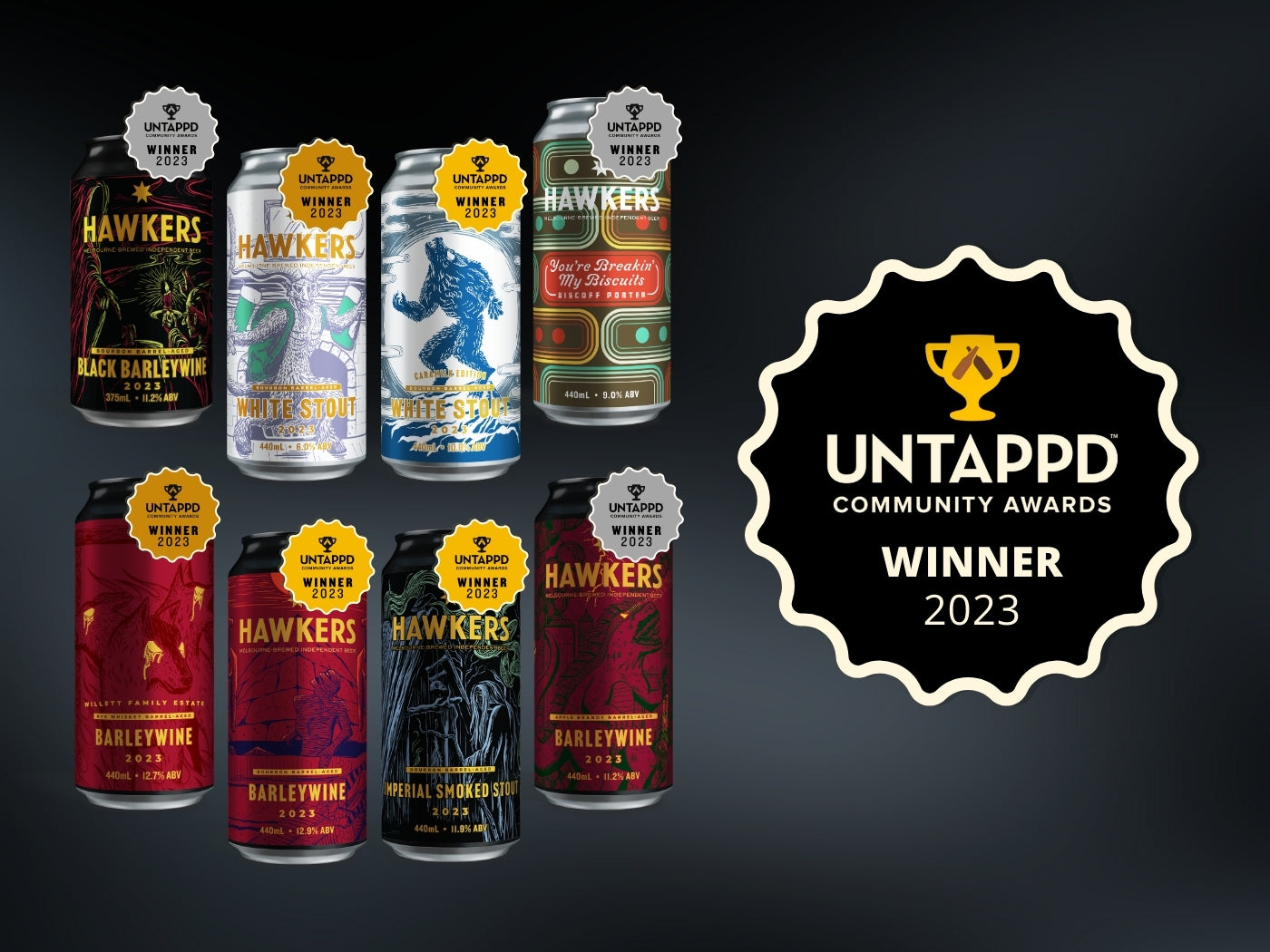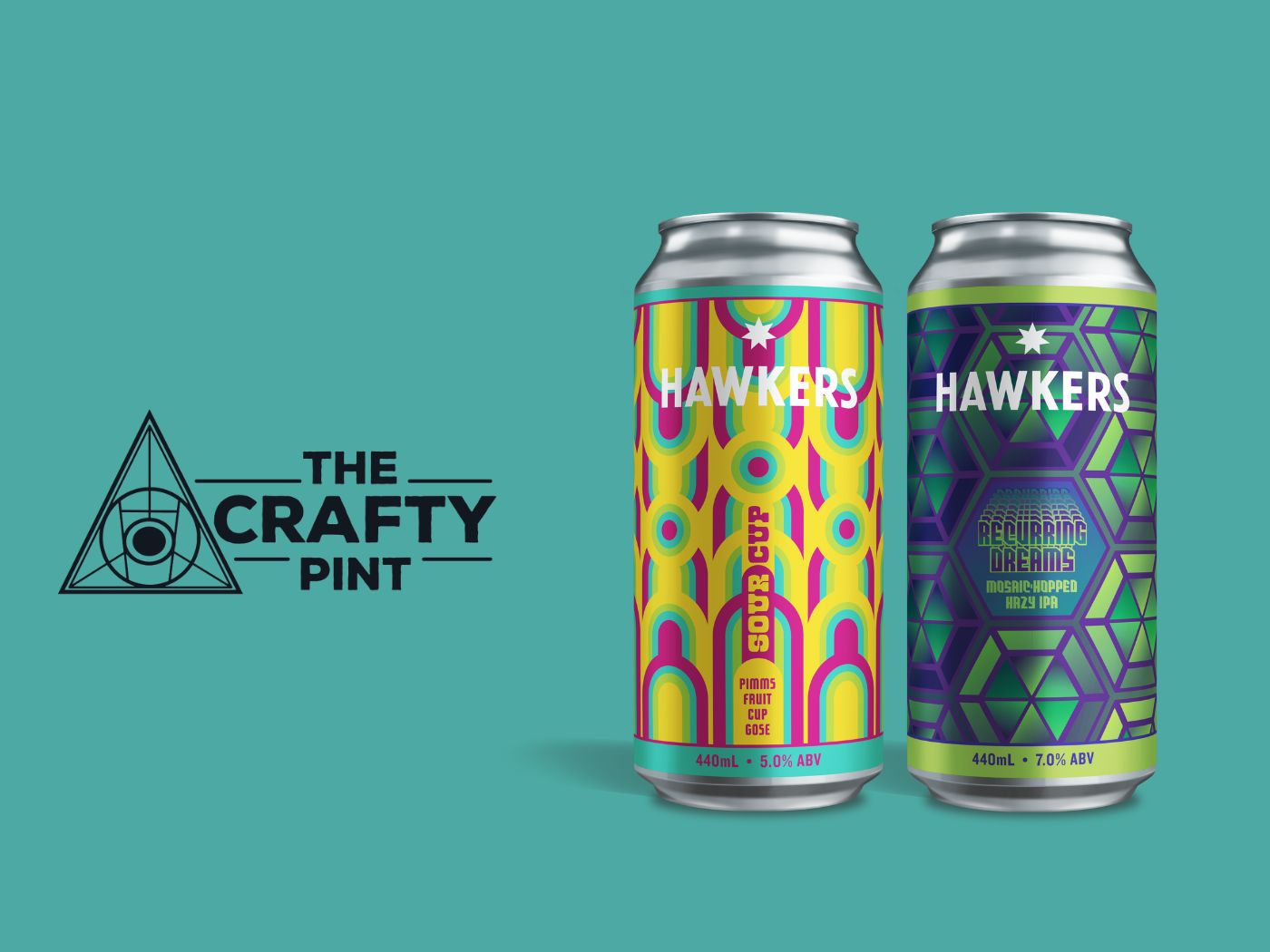Hawkers is on a path of experimentation, exploration, and boundary pushing, which in this case, sees us revisiting an old-school original in the IPA world. By using an updated malt profile, delving into recently developed hop breeds, and fermenting with contemporary yeast strains, we're modernising a classic.
First off, let's talk hops.
At one point in their glory days, hop farms in Britain spanned a massive 29,000 hectares. Today, they cover just under a thousand. The hop industry in the UK has faced these significant declines in recent history due to a number of factors, but have primarily been driven by changes in consumer tastes—particularly in the move away from bitter beers and towards big aromatic hops. In recent years, however, there has been a resurgence in the UK hop industry, driven by a growing interest in craft beer and locally sourced ingredients. UK hop farmers have been investing in new technologies and researching new hop varieties that are better suited to the UK climate, and more importantly, offering new unique flavour profiles in what can seem like a cluttered market space.
Charles Faram have been hop suppliers for over 150 years and became grower-owned in the 1980’s. Today, they are breeding new hops through their hop development program, aiming to find agronomically sound, exciting new hop varieties that are well-suited for the UK brewing industry with a focus on producing hops that offer unique flavour profiles and aroma characteristics.
This is a great point to introduce Harlequin, Jester, and Ernest: three amazing hops that play a integral part in our endeavour to remake a British classic.
ERNEST
Flavours: APRICOT, NECTARINE, SPICE
Typical Alpha Acid: 5-7%
Named for its breeder, Prof Ernest Salmon, it was selected at Wye College in Kent as a seedling under code OZ97a in 1923. It was used in brewing trials conducted by the Institute of Brewing in 1959 but it was considered to be a poor substitute for the control variety, Fuggle, due to its “strong, coarse, American aroma”.
It has clear “New World” characteristics producing a complex flavour with predominantly fruity notes, especially apricot, citrus and spice.
A late-maturing conventional variety on tall wirework which produces distinctly long cones.
HARLEQUIN
Flavours: PASSIONFRUIT, PEACH, PINEAPPLE
Typical Alpha Acid: 9.5-12%
A daughter of Godiva™, and grand-daughter of Jester®, Harlequin™ was named after its remarkably patterned bracts. It was first offered commercially in 2019.
Harlequin™ bursts with New World aromatics whilst maintaining a subtle hint of UK terroir. Delicate and tropical in pale beers; it shows unique marmalade and candied fruit notes when used with coloured malts.
JESTER
Flavours: GRAPEFRUIT, BLACKCURRANT, RESINOUS
Typical Alpha Acid: 7-9%
Jester® and its sister Olicana® are both seedlings of Cascade. It was Charles Faram's first foray into New World aromas and remains the most widely planted of their proprietary varieties.
Punchy and resinous, the flavour profile of Jester® balances well with dark malts and full bodied beers. Its citrus notes are highlighted when used with a light hand or as part of a blend.
Commercially released in 2013.
*Hop descriptions from charlesfaram.co.uk
Next up: the malt
We decided to go with 100% malts made from UK Heritage Barley.
Golden Promise is a heritage barley variety that dates back to the 1960s, with that barley then malted to become Golden Promise malt. More than half a century on, it continues to thrive - particularly in the craft brewing sector - due to its exceptional brewhouse performance and flavour profile.
Maris Otter’s superior Brewhouse Performance is fantastic. The ‘Rolls Royce’ of malts for the traditional brewer, this legendary heritage barley variety is the base malt for traditional English Bitter beers. Maris Otter has a low nitrogen content and high extract, producing a rich malty flavour with exceptional Brewhouse Performance and beer clarity.
*Malt descriptions from simpsonsmalt.co.uk
Let's not forget the yeast!
We have gone left of center with this beer and selected the English Verdant yeast from LalBrew. With medium-high attenuation, the yeast leaves a soft and balanced malt profile with slightly more body than a typical American IPA yeast strain. This highly versatile strain is well suited for a variety of beer styles and is most commonly used in NEIPAs.
Nothing here is business as usual, but everything here is a journey into flavour using a mix of traditional and new methods and ingredients to try and teach an old chap new tricks.




